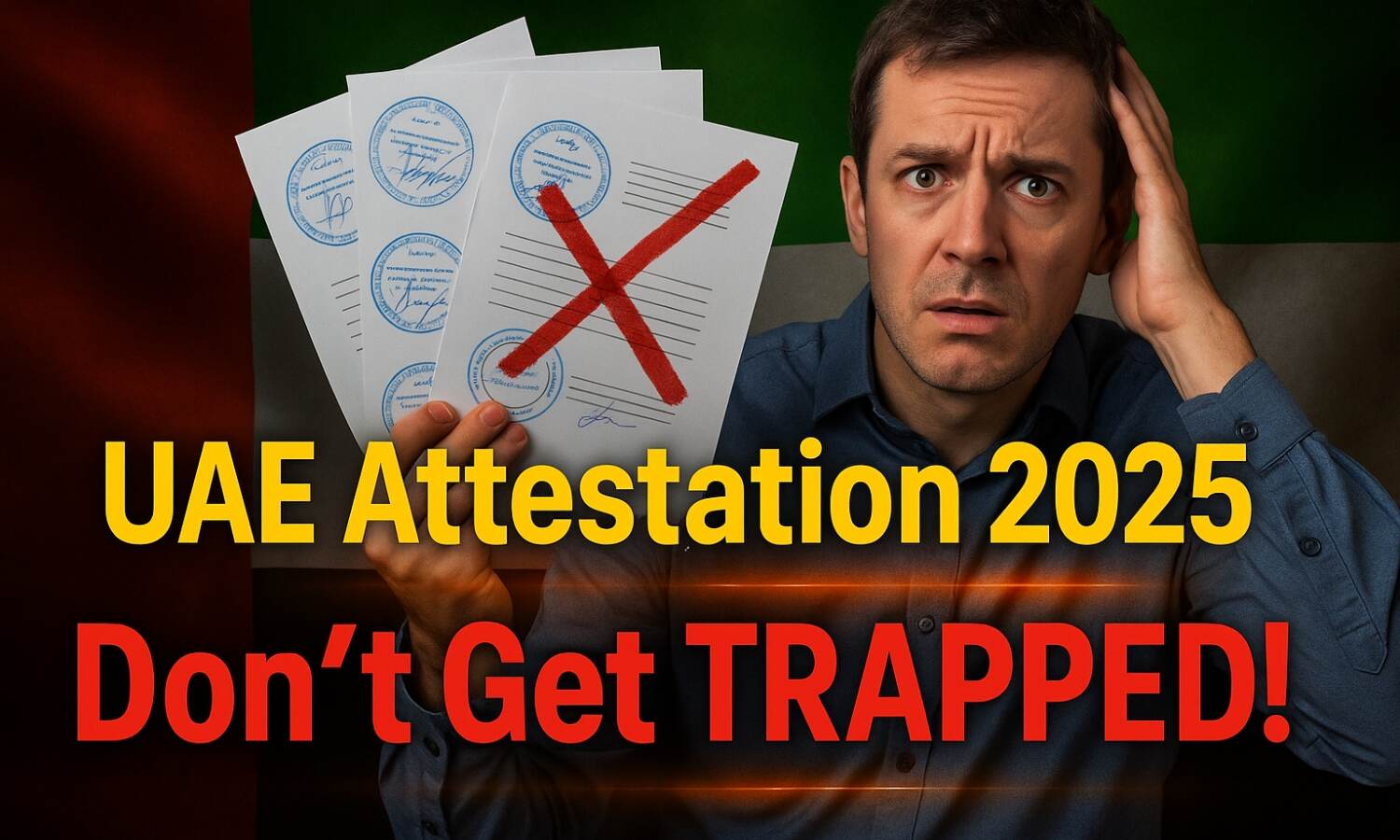
If you’re planning to travel, work, study, or settle in the UAE in 2025, one step you cannot skip is document attestation UAE. But the rules have changed recently and knowing the updated process is essential so your documents don’t get rejected or delayed. In this guide, we’ll walk you through the new steps, common pitfalls, and how to get it done smoothly.
Why Attestation Still Matters
Attestation is the legal verification of your documents so they are accepted overseas. In the UAE, entities like visa processing centers, employers, universities, and licensing authorities demand that your Indian documents (such as degrees, birth/marriage certificates, power of attorney, commercial contracts) be attested before you use them. Without proper attestation, your documents may be treated as invalid, which can lead to visa rejections, job offer withdrawals, or bureaucratic hurdles.
What’s New in 2025: UAE & India Attestation Reforms
Recent announcements have changed UAE attestation in India. The key update: UAE Embassy and MOFA attestation are now combined and processed in India itself. This means you no longer have to send your documents abroad for the final verification by UAE MOFA.
Some Major Improvements
- Single consolidated attestation: Instead of separate stamps for UAE Embassy and MOFA (done in UAE), there will now be a single certificate issued by the UAE Embassy that includes the MOFA endorsement.
- No physical shipment abroad: Documents stay in India the whole time, reducing courier risks and delays.
- Faster turnaround: What used to take over 20 working days now may be done in 10 12 working days, depending on states and complexity.
- Digital attestation options: UAE Embassy and MOFA have introduced digital or e‑attestation channels that work via uploads and QR verification.
- Cost and convenience: Without the need to courier documents overseas for MOFA stamp, costs shrink, and process becomes more user‑friendly.
These changes make the process more transparent, secure, and manageable especially if you’re applying from cities like Pune, Chennai, Mumbai, or Delhi.
Step‑by‑Step: Attestation Process for UAE (2025 Version)
Here’s the revised sequence you should follow for attesting your documents for UAE in 2025:
| Step |
What You Do |
Notes |
|
1. Notarisation / Local Verification |
Get your document notarised (Notary Public) to confirm authenticity |
Essential first step |
|
2. State Level Attestation |
For educational: HRD / State Education Department; for personal documents: State Home / SDM; for commercial: Chamber of Commerce |
Ensure the correct local authority is used |
|
3. MEA Attestation (India) |
Submit the document to the Ministry of External Affairs (India) for national verification |
The MEA certifies that the state level stamp is valid |
|
4. UAE Embassy + MOFA Attestation in India |
Submit MEA attested document to the UAE Embassy/Consulate in India; the embassy will also apply the MOFA approval digitally or via unified stamp |
This is the new combined stage |
|
5. Download / Collect |
You will receive the final attested document, sometimes with a QR code or digital verification link |
Document is now usable in the UAE |
Documents You’ll Commonly Need
For different purposes, these are commonly attested:
- Educational: Degree, diploma, mark sheets, transcripts
- Personal: Birth certificate, marriage certificate, NOC, affidavit
- Commercial: Power of Attorney, MOA, contracts, invoices
- Supporting documents: Passport copy, job offer letter, authorization letters
If any document is not in Arabic or English, a certified translation may be required by some authorities.
Benefits & Challenges in the New System
Pros:
- You avoid international shipping and associated delays
- Lower risk of document loss
- Faster and consolidated legalisation
- Transparent tracking and fewer intermediaries
- MOFA included by default, so no surprise stamp missing in UAE
Watch Outs:
- Even with changes, you still need to follow the correct order: Notary → State → MEA → Embassy/MOFA
- Mistakes at any step (wrong seal, missing signature, misalignment) can lead to rejection
- Some embassies may still require physical submission of original documents (not just scans)
- Digital systems are new; ensure you’re submitting through authorized channels
- Some older documents attested under the old system may need re‑attestation under the new rules
Tips to Make It Smooth
- Confirm the authorized centre at the UAE Embassy that handles combined attestation
- Use a trusted service like Manav (or other reputable agencies) who already work with the digital process
- Prepare all original documents and supporting paperwork up front
- For urgent requirements, ask for express or priority service (if available)
- Track your application via portal or QR as permitted
- Always check whether translation is needed and get certified versions if so
What This Means for You
With 2025’s update, getting your documents attested for the UAE is no longer a two-country ordeal. UAE Embassy and MOFA exaggerations are now unified, efficient, and India‑based. That means less risk, lower cost, and faster timelines. Whether you’re going for a new job, applying for university, or relocating with family, this change works in your favour if you follow the process correctly.
If you don’t want to navigate the evolving rules yourself, that’s where professional attestation services shine. They already know the updated system, have embassy contacts, and can make sure your documents clear every hurdle. Reach out to a trusted attestation partner such as Manav Consultants and let them handle the logistics you focus on your UAE ambitions.